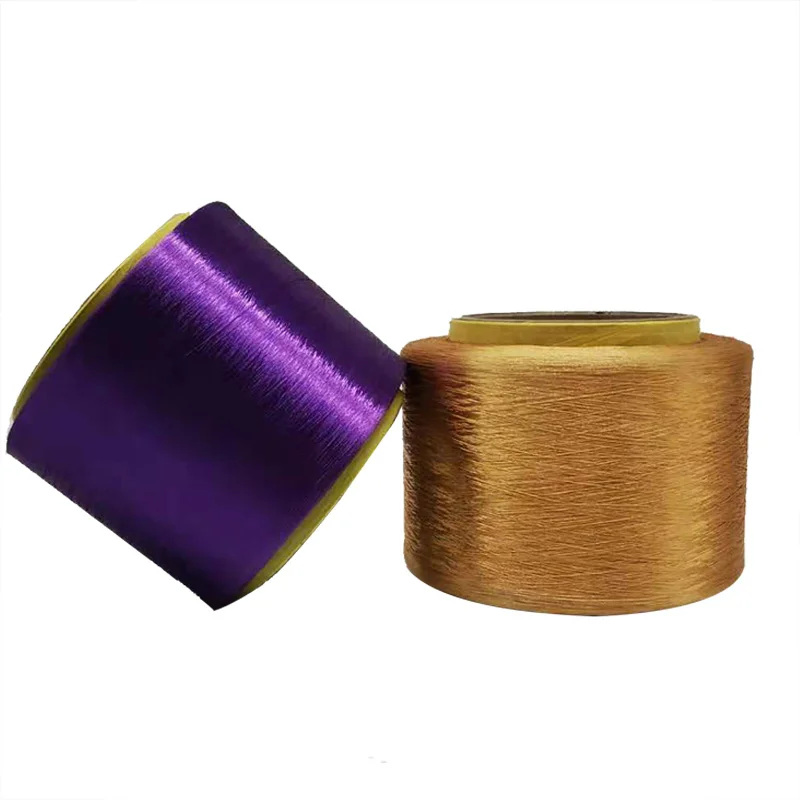Polypropylene filament yarn has become a vital material in modern textiles due to its lightweight nature, high strength-to-weight ratio, excellent chemical resistance, and cost-effectiveness. However, what truly determines the performance and quality of this versatile yarn lies beneath the surface — in the grade and formulation of the polypropylene (PP) resin used.

At Hangzhou Futureyarn Textile Co., Ltd., selecting the right polypropylene resin is not just a procurement choice, but a foundation of quality assurance. From fiber uniformity to dyeing performance, and from mechanical strength to application-specific features, the characteristics of polypropylene filament yarn are deeply influenced by the raw materials from which it is spun.
Understanding Polypropylene Resin Grades
There are several types of polypropylene resin available, each offering distinct properties that influence yarn performance:
1. Homopolymer Polypropylene
Made entirely from propylene monomers, this resin type provides:
-
Higher tensile strength
-
Greater rigidity and durability
-
Lower impact resistance
Yarn made from homopolymer PP is ideal for industrial textiles, ropes, geotextiles, and high-tension applications.
2. Random Copolymer Polypropylene
This grade includes small amounts of ethylene for increased flexibility. It offers:
-
Better softness and transparency
-
Improved processability
-
Slightly reduced strength compared to homopolymers
Yarns produced from random copolymers are suited for apparel, nonwoven fabrics, and medical applications.
3. Block Copolymer Polypropylene
With higher ethylene content and blocky structure, this grade provides:
-
Superior impact resistance
-
Greater toughness under stress
-
Enhanced temperature stability
Filament yarn made with block copolymer PP is used in technical textiles, automotive interiors, and protective gear.
Key Resin Properties Affecting Yarn Quality
To produce consistently high-quality polypropylene filament yarn, several critical resin parameters must be tightly controlled:
• Melt Flow Index (MFI)
The MFI of polypropylene resin directly influences spinning efficiency and fiber properties:
-
Low MFI (2–4 g/10 min): Higher molecular weight, excellent for fine denier yarns with superior strength
-
High MFI (20–30 g/10 min): Easier flow, but may reduce mechanical strength if not properly managed
At Futureyarn, resin with carefully selected MFI ranges ensures optimum balance between spinning speed and filament durability.
• Isotactic Index
The degree of polymer chain regularity affects:
-
Crystallinity
-
Thermal resistance
-
UV stability
A higher isotactic index results in better tensile strength and stiffness — essential for UV-resistant yarns used outdoors.
• Additive Compatibility
Many applications require performance-enhancing additives such as:
-
UV stabilizers for sun protection
-
Flame retardants for safety fabrics
-
Color masterbatches for dope-dyed filament yarns
-
Antistatics for packaging and electronics
Resin Quality = Yarn Performance
High-quality polypropylene filament yarn depends not only on spinning technology, but on the purity and consistency of the resin itself. At Hangzhou Futureyarn, all incoming polypropylene resin batches undergo strict testing for:
-
Melt flow consistency
-
Moisture content
-
Volatile residue levels
-
Contaminant-free filtration
This enables the production of yarns that meet demanding standards in sectors like:
-
Home textiles
-
Outdoor equipment
-
Agricultural fabrics
-
Technical nonwovens
In the competitive world of synthetic yarn production, polypropylene filament yarn remains a cost-effective, high-performance solution. But to unlock its full potential, one must begin with the right foundation: resin selection. Hangzhou Futureyarn Textile Co., Ltd. ensures this foundation is solid—choosing polypropylene grades tailored to each product’s application and performance needs.
www.futureyarn.com
Hangzhou Futureyarn Textile Co.,Ltd.
